Knowing how to change a tire is a necessary skill for all drivers. If you rely on a cell phone to save you in a roadside emergency, there’s always that chance you will forget to charge it, be out of range, or leave it at home. Flat tires can happen anywhere, and a cell phone is no substitute for knowing how to change a flat tire.
Thankfully, changing a tire isn’t all that hard! Just adhere to the following guidelines to be prepared in case you have a flat.
These items should have come with your vehicle:
Jack
Lug wrench
Fully inflated spare tire
Vehicle owner’s manual
If you have misplaced any of these items, or if your car did not come with these items, you should purchase new ones right away. And be sure you’re regularly inflating the spare tire to your vehicle manufacturer’s recommended PSI. You should check the spare’s air pressure every time you check your other tires.
Remember to check pressure every month and before long trips or carrying extra load.
Here are some items that don’t come with your vehicle but that you should stow in your trunk or glove box in case you have to change a flat tire:
Flashlight with working batteries
Rain poncho
Small cut of 2"x6” wood to secure the jack
Gloves
Wheel wedges
As soon as you realize you have a flat tire, do not abruptly brake or turn. Slowly reduce speed and scan your surroundings for a level, straight stretch of road with a wide shoulder. An empty parking lot would be an ideal place. Level ground is good because it will prevent your vehicle from rolling. Also, straight stretches of road are better than curves because oncoming traffic is more likely to see you.
Never attempt to change your tire on a narrow shoulder near oncoming traffic. Keep moving (slowly) until you find a safer spot. While driving on a flat risks ruining your rim, replacing a rim is better than being hit by an inattentive driver.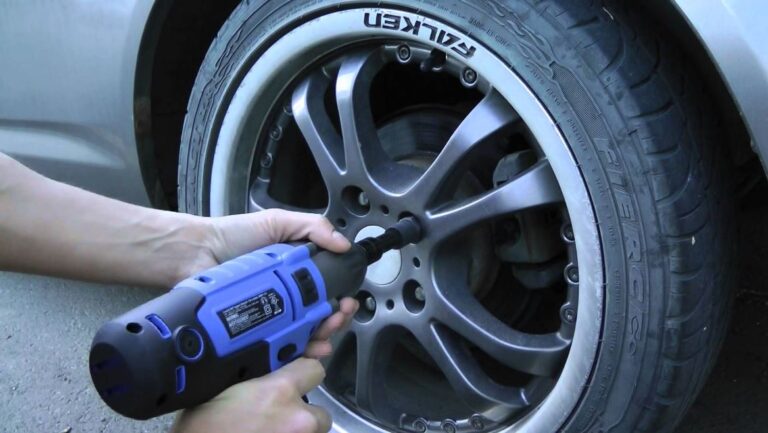
Make sure to consult your owner’s manual and review their specific steps on how to change a flat tire for your vehicle
Your hazard lights or “flashers” will help other drivers see you on the side of the road. To avoid an accident, turn them on as soon as you realize you need to pull over.
Once stopped, always use the parking brake when preparing to replace a flat tire. This will minimize the possibility of your vehicle rolling.
Wheel wedges go in front of or behind the tires to further ensure the vehicle doesn’t roll while you fix the flat tire. If you’re changing a rear tire, place these in front of the front tires. If your flat tire is at the front, put the wheel wedges behind the rear tires.
Bricks or large stones will work just as well as “real” wheel wedges. Just be sure they’re large enough to stop the car from rolling.
If your vehicle has a hubcap covering the lug nuts, it’s easier to remove the hubcap before lifting the vehicle with the jack. If your lug nuts are exposed, you can skip ahead to Step 6.
If your lug nuts are exposed, you can skip ahead to Step 6.
Use the flat end of your lug wrench to remove the hubcap. This will work for most vehicles, but some hubcaps need a different tool to come off. Consult your owner’s manual for proper hubcap or wheel cover removal procedures.
Using the lug wrench, turn the lug nuts counterclockwise until you break their resistance. You may have to use force, and that’s ok. Use your foot or all of your body weight if necessary.
Loosen the lug nuts about ¼ to ½ of a turn, but don’t remove them completely yet. Save that for when it’s time to remove your tire/wheel from the vehicle.
The right place for the jack is usually beneath the vehicle frame alongside the tire that’s flat. Many vehicle frames have molded plastic on the bottom with a cleared area of exposed metal specifically for the jack. To safely lift and avoid damage to the vehicle, follow the instructions for jack placement in your vehicle owner’s manual.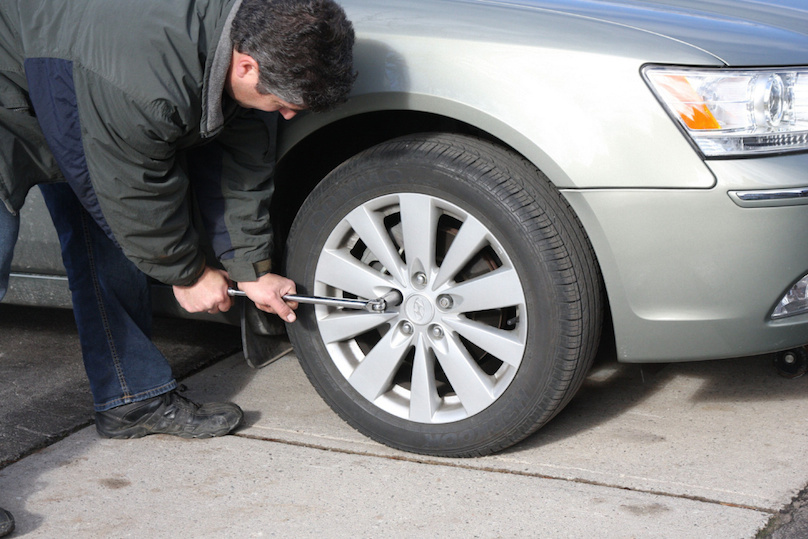
To prevent the jack from settling under the weight of your vehicle and coming off balance, place a small cut of 2x6” wood beneath it before attempting to raise your vehicle. This tactic is especially helpful on asphalt.
With the jack properly positioned, raise the vehicle until the flat tire is about six inches above the ground.
Never put any part of your body under the vehicle during or after raising the vehicle with the jack.
Now it’s time to remove the lug nuts all the way. Since you've already loosened them, you should be able to unscrew them mostly by hand.
Gripping the tire by the treads, pull it gently toward you until it’s completely free from the hub behind it. Set it on its side so that it doesn’t roll away.
Now place the spare on the hub by lining up the rim with the lug bolts. Push gently until the lug bolts show through the rim.
Put the lug nuts back on the lug bolts and tighten them all the way by hand. Once they are all on, check each one again, tightening as much as possible. You will tighten them with the wrench after lowering the vehicle to the ground.
Use the jack to lower the vehicle so that the spare tire is resting on the ground but the full weight of the vehicle isn’t fully on the tire. At this point, you should tighten the lug nuts with the wrench, turning clockwise, as much as you can. Push down on the lug wrench with the full weight of your body.
Bring the vehicle all the way to the ground and remove the jack. Give the lug nuts another pull with the wrench to ensure they’re as tight as possible.
If the hubcap you took from the flat tire will fit your spare, put it in place the same way you removed it initially.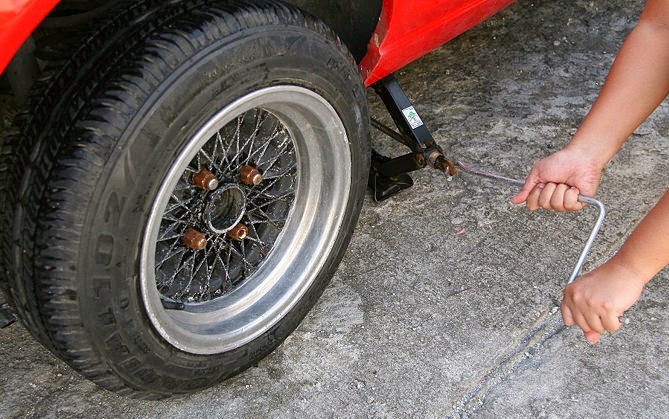 If it doesn’t fit, stow it away with the tire when you stow your equipment.
If it doesn’t fit, stow it away with the tire when you stow your equipment.
You have before you a jack, a lug wrench, wheel wedges, your flat tire, and possibly a hubcap. Don’t forget to put all of them in your vehicle before driving away.
You should check the tire pressure of the spare tire to make sure that it is safe to drive on. “T-Type” temporary spares, also called “mini-spares,” require 60 psi (420 kPa). If the tire needs pressure, drive (slowly) to a service station immediately.
Temporary spare tires aren’t made to drive long distances or at high speeds, so drive cautiously until you’re able to visit a tire technician. A professional should be able to determine whether your tire needs a repair or if it’s time to replace it.
Aside from taking your tire to a professional, the above procedure shouldn’t take more than 15 to 30 minutes to change a tire. Just be sure you don’t leave out any steps.
Just be sure you don’t leave out any steps.
It’s beneficial practice changing a tire in your garage or driveway to ensure you’re ready to handle this situation if it ever happens to you.
Knowing how to fix a flat tire is great, but regular tire maintenance is even more important. In addition to reviewing this guide regularly, remember to do the following:
Keep your tires properly inflated
Rotate your tires according to the manufacturer’s guidelines
Monitor for tread wear
All of these precautions will extend the life of your tires and reduce the likelihood of a flat. While there’s no way to prevent flat tires completely, proper care can improve performance and ensure your tires last as long as possible.
There’s never a good time for a flat. That’s why Bridgestone DriveGuard tires are masterfully engineered to keep you moving for up to 50 miles at speeds up to 50 MPH without disruption.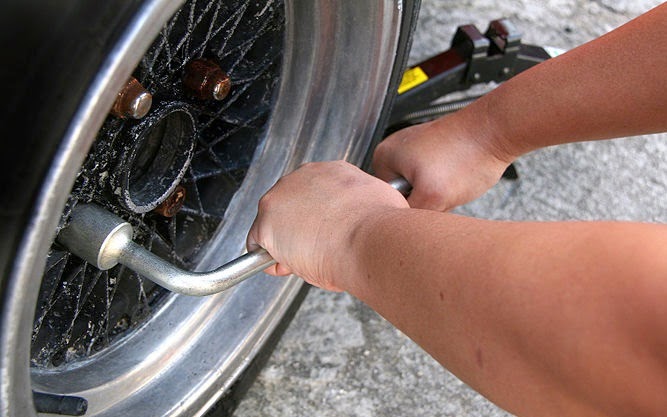
There’s never a good time for a flat. That’s why Bridgestone DriveGuard tires are masterfully engineered to keep you moving for up to 50 miles at speeds up to 50 MPH without disruption.
See Details Find Your Fit
September 16, 2022
Flat tires can happen at any time and place, and emergency roadside assistance may not always be available. So whether you’re a seasoned driver or a teen who’s getting behind the wheel for the first time, it’s important to know how to change a car tire.
We admit, it’s not as simple as jump-starting a car or checking fluid levels, but there’s no need to be intimidated—changing a tire really isn’t too difficult. This guide covers everything you need to know about changing a flat tire, step by step.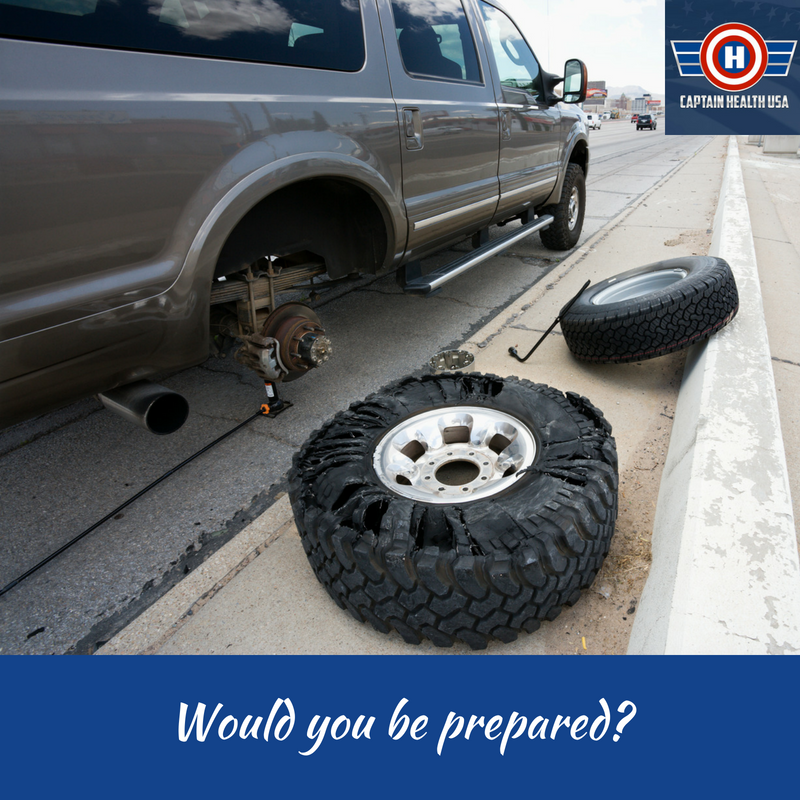
New cars come equipped with the basic items needed to change a tire, but over time they may be misplaced. If you bought a used car, it could be missing some, or all, of the things you need to change a tire. Check your car for these essentials and replace any items you don’t find.
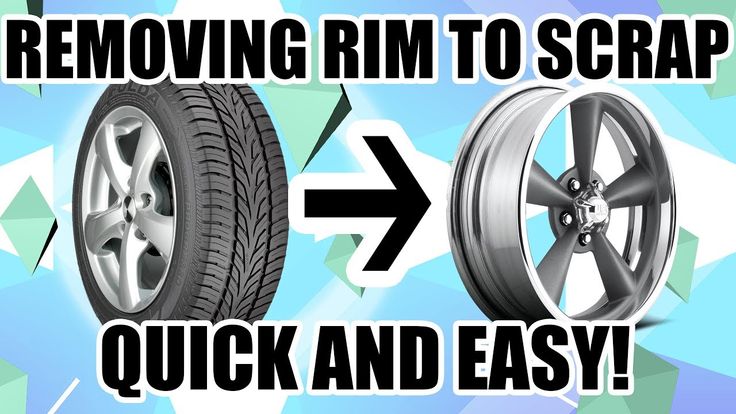
In addition to the essentials outlined above, there are a few things SafeWise recommends having on hand to make changing a tire easier and less dangerous. Pack these items—along with a first aid kit, bottled water, and other safety items—in a durable bag and stow them in your car. Or purchase a roadside emergency kit that contains most, or all, of these things.

If you’re driving when you get a flat tire, slowly decrease your vehicle’s speed, turn your car’s hazard lights on, and look for a safe place to stop. If possible, pull into a parking lot with open space or find another low-traffic area.
Once stopped, put your car in park and engage the parking brake. This is another safety measure to help your car remain in place while you change the tire.
If you have flares or reflective warning triangles, set them out according to product instructions. Use extreme caution and never turn your back to oncoming traffic.
Use extreme caution and never turn your back to oncoming traffic.
Wheel wedges help prevent your car from moving. When changing a front tire, place them behind your car’s rear tires. When you change a rear tire, place them in front of the car’s front tires.
Next, you need to remove the hubcap. This is necessary so you can get to the lug nuts that secure your tire to the car. Use the pry bar (the lug wrench’s flat end) to pop the hubcap off the tire rim.
Use the lug wrench to loosen the lug nuts. Remember: lefty-loosey. You might need more leverage or an extra oomph of strength if the lug nuts are especially tight. Longer lug wrenches give more leverage, and sometimes you can push the lug wrench down with your foot to loosen the nut—just be careful not to loose your balance.
The best place for a jack is under the vehicle frame, next to the flat tire.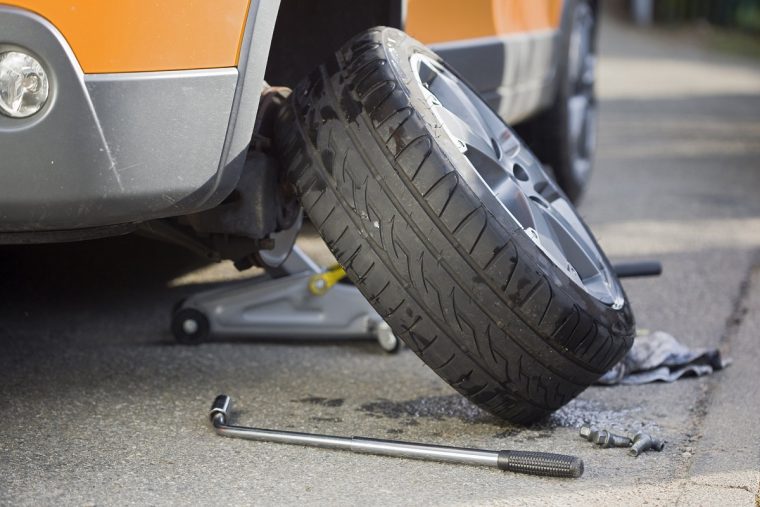 For safety and to avoid damaging your car, consult your vehicle owners manual for specific instructions on where, and how, to place the jack.
For safety and to avoid damaging your car, consult your vehicle owners manual for specific instructions on where, and how, to place the jack.
Pump the jack slowly until the flat tire is off the ground. Make sure none of your or anyone else’s body parts go under the car while you’re raising it or once it’s raised. If your car moves while it’s on the jack, don’t try to stop it. Move away from your car and wait for it to fall, then try again.
With the lug nuts already loose, finish unscrewing them by hand. Put the lug nuts in a safe location so they aren’t misplaced.
Pull the tire toward you to remove it from the hub, then place it on its side and out of your way. If it's being stubborn, kick it. No, really—a swift kick can loosen any rust and help you pull the tire off. If you're wearing flip flops or sandals, sit on the ground (if it's safe to do so) and put both feet on the tire and push.
Line up the spare tire with the lug bolts and push it on the wheel hub until the bolts penetrate the rim.
Place the lug nuts on the lug bolts and tighten them down by hand. Don’t use the lug wrench to secure them yet.
Using the jack, lower your car until the spare tire touches the ground. Be careful not to lower it to the point where it bears your vehicle’s whole weight.
Tighten down the lug nuts by turning the wrench clockwise as much as you can. It’s important to tighten the lug nuts in the correct sequence to help ensure they stay secure on the hub. The star pattern is a good rule of thumb for tightening lug nuts.
Lower your car completely and remove the jack. Tighten your wheel’s lug nuts one more time, using the same pattern as you did in the previous step.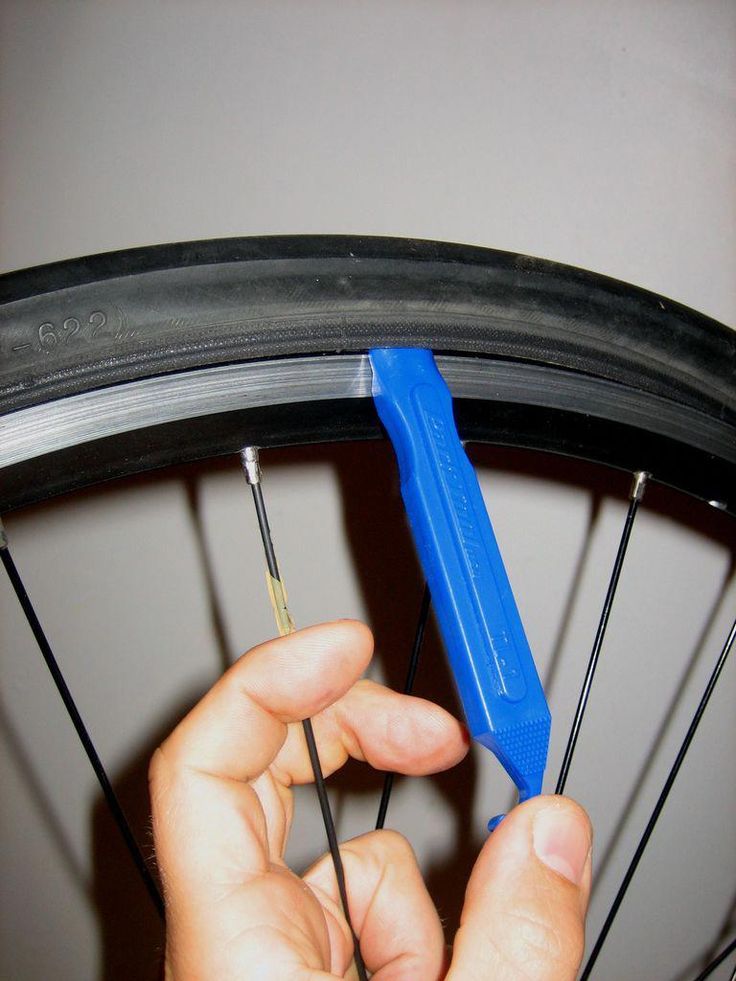
If the hubcap you removed fits the spare tire, put it back on.
If the hubcap you removed fits the spare tire, put it back on.
Gather all the items you used and secure them in your car. Be sure to stow your owners manual, jack, and lug wrench in their proper places.
It’s dangerous to drive on a spare tire for long distances so take your flat tire to a professional auto repair shop and have it fixed or replaced as soon as possible.
Taking proper care of your car tires can’t guarantee you’ll never get a flat, but it may reduce the chance. Regular tire maintenance can also help extend the life of your tires, make your vehicle safer to drive, and improve fuel efficiency.
According to the Rubber Manufacturers Association’s (RMA) tire maintenance checklist, there are a few easy things you can do to help keep your tires in good condition: regularly check tire air pressure, rotate tires based on your vehicle manufacturer’s recommendations, and have them balanced and aligned periodically.
Preventive maintenance can help keep your tires in good working order, but it’s still important to inspect them frequently. The RMA recommends setting aside five minutes every month to look for early warning signs of car tire failure: cracks in the tire sidewall, uneven tread wear, excessively worn-down tread, and bulges. If you note any of these problems, go to an auto repair shop and have your tire repaired or replaced.
Before you or your teen hits the road again, practice changing your car’s tire in a safe location like the driveway or garage. Getting familiar with the process now will make you better prepared to change a tire under less ideal conditions. We suggest keeping this guide in your car’s glove compartment, and reviewing it every now and then to brush-up on how to change a tire.
For any other vehicle-related questions, visit our Car Safety Guide to find auto safety checklists and educational opportunities.
SafeWise wants you to keep in mind that changing a tire can be dangerous. If you get a flat in an especially unsafe location, like a busy highway, and you can’t get your vehicle to a safer place, put your car’s hazard lights on and call the police for help. They can help block or divert traffic while you or your roadside assistance provider change the tire.
If you get a flat in an especially unsafe location, like a busy highway, and you can’t get your vehicle to a safer place, put your car’s hazard lights on and call the police for help. They can help block or divert traffic while you or your roadside assistance provider change the tire.
Product | Best for | Price | Specs | Stand-out feature | Learn more | Read review |
DroneMobile X-1 | Best car alarm | $129. 95 95 | 3,000 ft range | Remote start Diesel engine safe | View on Amazon | Read review |
|---|---|---|---|---|---|---|
Rexing V1P | Best dash cam | $159.99 | 4K Full HD 170° front and rear | Tolerates -20°F to 176°F | View on Amazon | Read review |
Vyncs | Best vehicle tracker | $89.99 | OBD port plug-in | Maintenance reminders | View on Amazon | Read review |
Torin Big Red | Best portable car jack | $25.60 | Lifts up to 15 in. and 3,000 lbs. | Lightweight Affordable | View on Amazon | Read review |
Garmin DriveSmart 61 | Best navigation system | $278.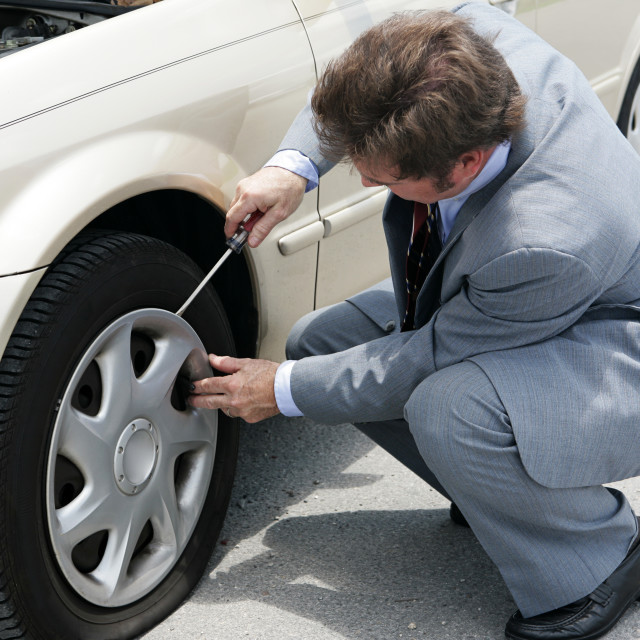 05 05 | 6.95 in. touchscreen | Voice control | View on Amazon | Read review |
Disklok | Best steering wheel lock | $189.98 | Hardened steel 3 different sizes | Tamperproof lock | View on Amazon | Read review |
*Data as of post date. Offers and availability may vary by location and are subject to change. SafeWise uses paid Amazon links.
Written by
Alexia Chianis
Wanderlust junky and mom of two, Alexia is a former police officer and U.S. Army Captain who draws on her experiences to write about a myriad of safety topics.
Read More
11/29/2022
The Best Home Alarm Systems in the UK
Find the right alarm system to protect your UK home. SafeWise recommends security systems for. ..
..
Date: February 21, 2018
Imagine that you are driving alone in your car, going about your usual business, and suddenly you feel that the car is behaving strangely, perhaps even hearing popping from under the wheels. You get out of the car and find a flat tire. Don't panic, it's not the end of the world. You can contact the WEBER-AUTO car service for a tire fitting or roll up your sleeves and change a flat tire on your own)
Make sure you always have a basic set of tools at hand. To get the job done quickly and, most importantly, safely and correctly, you will need:
In addition, you may need a multi-purpose grease such as WD40. Also, a luminous vest, a flashlight, if you have to work at night, a pair of gloves and an old rug, so as not to get your hands and knees dirty, will not be superfluous.
Also, a luminous vest, a flashlight, if you have to work at night, a pair of gloves and an old rug, so as not to get your hands and knees dirty, will not be superfluous.
Now that you're properly prepared, follow the step-by-step guide to changing a flat or damaged tire.
Stand on the side of the road. If a tire goes flat while driving, turn on the alarms and slow down to 8 km/h. Choose the nearest convenient and safe place on the side of the road, away from heavy traffic. If this is not possible, at least find a place where your car will be clearly visible.
Remember: never try to change a wheel in the emergency lane, it is extremely dangerous! Park on a level surface. After you have parked, make sure the car is on a flat surface. Do not attempt to change a tire on uneven ground.
Engage vehicle handbrake, engage first gear, or put into park, depending on gearbox type. Put shoes under the wheels, in front and behind the wheel diagonally from the one being repaired. For example, if the front tire on the passenger's side is flat, place chocks around the rear wheel on the driver's side.
For example, if the front tire on the passenger's side is flat, place chocks around the rear wheel on the driver's side.
Then place a reflective triangle 20 meters behind the vehicle. The location of the sign depends on which road you are on. If the road is winding, for example, position it where it can be seen by approaching drivers.
For the same purpose, you can open the hood, so other drivers will see that you are repairing something.
Remove the wheel cover. Make sure the spare wheel is ready and in good condition and that you have all the necessary tools. Using tools, remove the wheel cover, if equipped.
Then loosen the nuts by turning them counterclockwise. It is easier and easier to do this before you lift the car with a jack. Do not remove the nuts, just loosen them until they can be tightened by hand. If necessary, apply lubricating oil to each nut. If you have secret nuts, you will also need a wrench for them.
Determine the location of the jack on the vehicle. Check with the user manual if in doubt, this requires accuracy. If you install the jack incorrectly, it can damage the underside of the car when you start to raise it.
Check with the user manual if in doubt, this requires accuracy. If you install the jack incorrectly, it can damage the underside of the car when you start to raise it.
Raise the vehicle high enough to fit the spare wheel.
Now completely remove the nuts and put them in a safe place so they don't get lost. Remove the flat tire and lay it on the ground. Install the new wheel and loosely tighten the nuts just to keep the new wheel from falling off. Fasten the wheel. Lower the car and only after it is on the ground, remove the jack.
Now tighten the nuts with a wrench by turning it clockwise. Tighten the nuts diagonally in pairs - for example, if you tighten a nut at the 10 o'clock position, tighten the next one at 4 o'clock, and so on until they are tight enough.
Reinstall the wheel rim and remove the tools. You won't get a speed medal, so don't rush, drive slowly. The old wheel will need to be repaired as soon as possible.
In case you find more serious car malfunctions during the replacement of a flat tire, contact our tire service WEBER-AUTO for professional assistance in wheel repair.
Flat tire on the road, no one around, tire shop far away. Here's what you need to do to put a spare on your own, even if you've never done it before.
Switch on emergency lights.
SourcePlace warning triangle on the road. Usually it is in the trunk.
The sign must be installed behind the car at a distance of 15 m in built-up areas: this is approximately 22 steps for a person of average height. If the wheel needs to be changed on the track, a distance of 30 m is required - approximately 45 steps. This is especially important in the evening or at night when visibility is much worse. In the dark, you also need to wear a reflective vest.
Put the car on handbrake . Mechanics - handbrake and first gear. A car with an automatic transmission - on the handbrake and in the parking mode.
To ensure that the machine does not start moving, additional wheel chocks or stops can be fitted.
This is what wheel chocks look like under a car wheelNo shoes - stones or bricks of the right size will do.
Install the wheel chocks on the opposite side. For example, you need to replace the rear wheel - the stops are placed under the front wheels.
You will need a jack, a wheel wrench and a spare wheel.
Jack and wheel wrench usually look like thisThe wheel is in a niche under the boot. In some cars, for example, "Niva" or "Oka" - under the hood.
The jack must be installed exactly under the jacks that are in the car . If the jack support is misaligned, the vehicle may roll over onto its side.
If the jack support is misaligned, the vehicle may roll over onto its side.
If the ground is loose or wet, the jack will fall through, so you need to put something solid under it. Suitable floor mats, boards, bricks or branches.
Properly installed jackRaise the car a little : no more than 1 cm.
SourceRemove the punctured wheel . Use the wheel wrench to loosen the wheel bolts. If you can’t do it with your hands, you can stand on the key with your feet.
Raise the vehicle with a jack until the wheels are off the ground . It is necessary to finally unscrew the bolts - with your fingers or a wrench - and remove the wheel.
Place the removed bolts in such a way that dirt does not get on the threaded part, otherwise the threads will be damaged. With a faulty thread, the wheel will not be firmly attached to the car.
Install the spare wheel:

Check that the wheel is correct:
